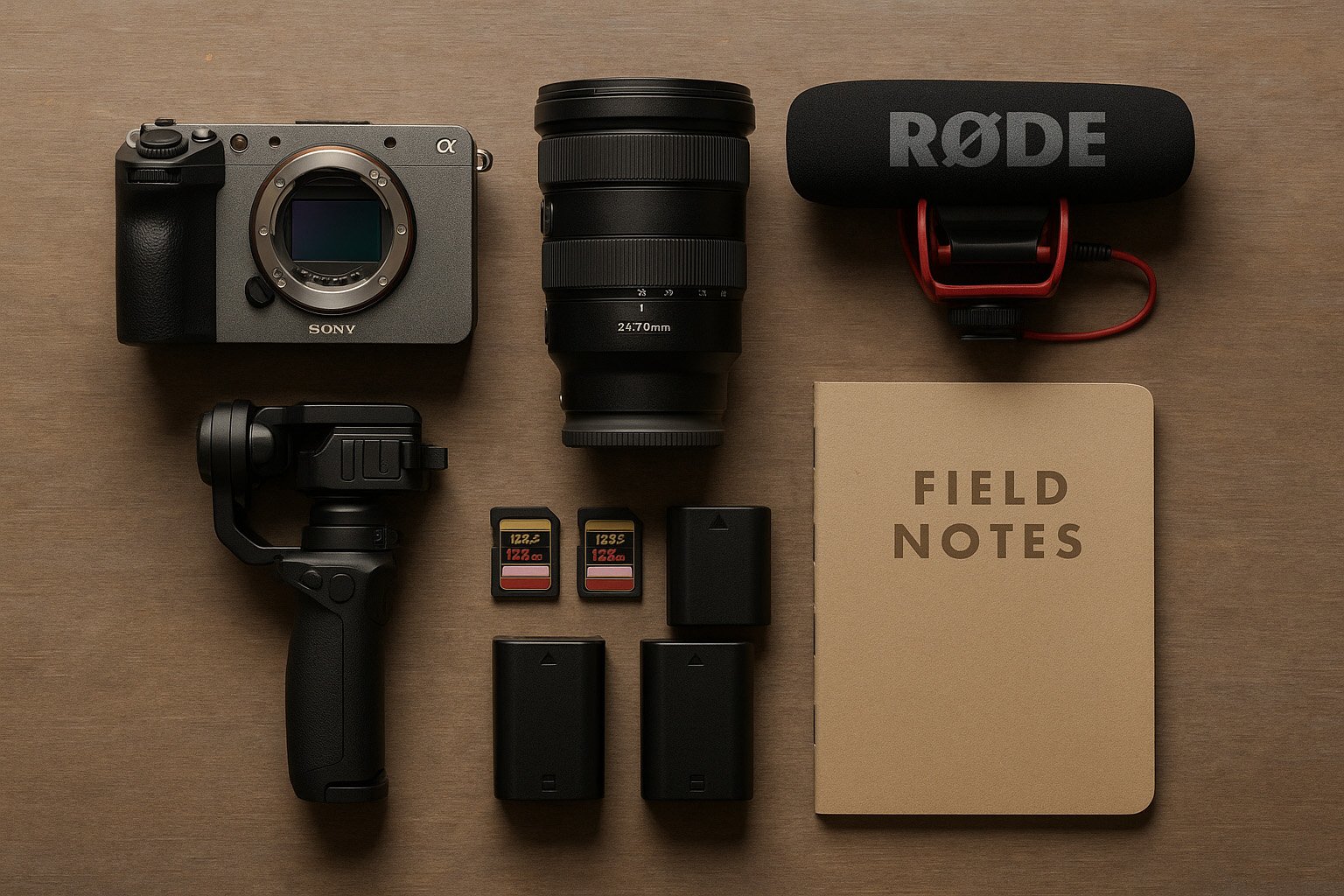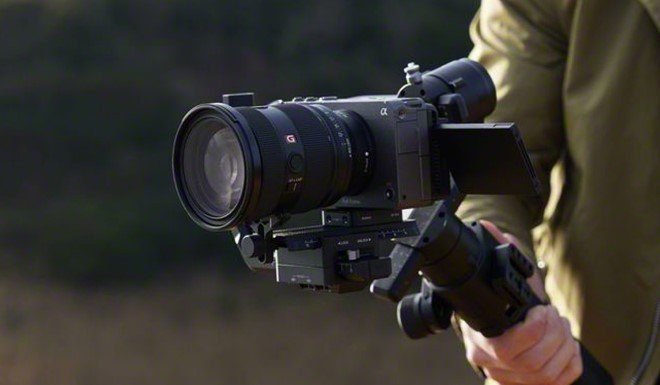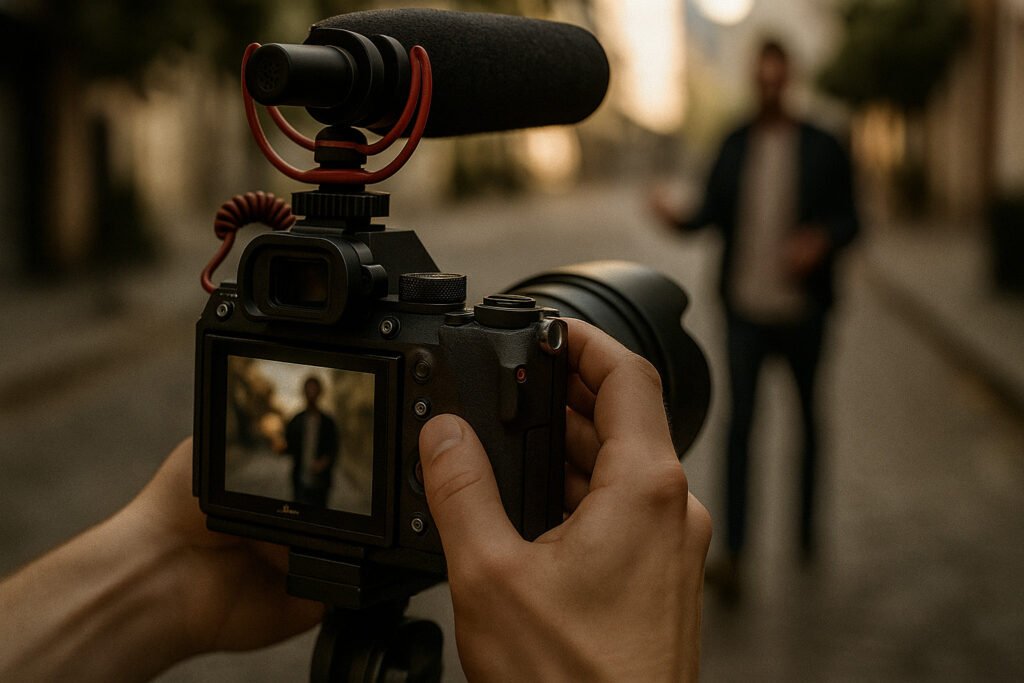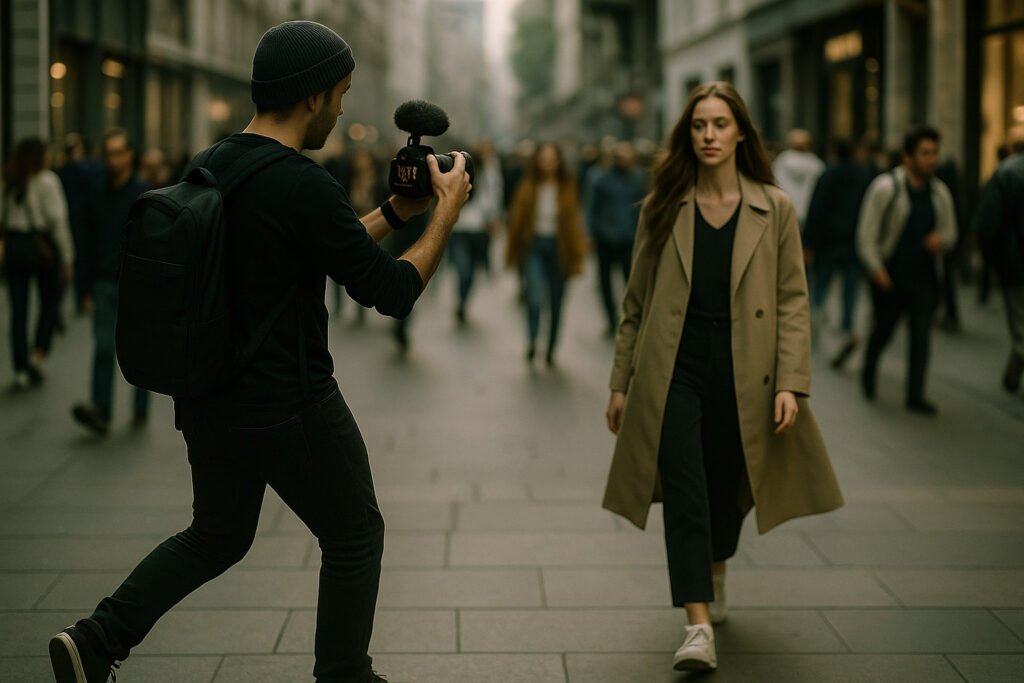
Shooting both photo and video for the same client gig can feel like juggling knives with one hand tied behind your back — unless you have a tight hybrid workflow. In this post, I’ll walk you through how I handle hybrid shoots solo, including my real-world gear setup, how I switch between modes, and why the right workflow matters more than the fanciest camera.
A few years ago, I shot a brand shoot for a fitness coach in downtown LA. No assistant. No second shooter. Just me, a bag of gear, and a tight shot list that called for headshots, lifestyle images, social clips, and a 90-second promo video.
I remember looking at the schedule and thinking:
“Damn — there’s no room for mistakes today.”
By the time we wrapped, I had over 200 raw photos, three finished video scenes, clean audio, and a happy client.
And I did it without a big rig, a fancy gimbal, or pausing every two hours to reconfigure gear.
That’s the power of a locked-in hybrid shooter workflow. When you build it around your gear, your shooting style, and your deliverables — you can move fast and still shoot like a pro.
Hybrid shooting means capturing both photo and video content on the same job — sometimes even in the same moment.
If you’ve ever tried to do this on a busy shoot day, you already know: it’s not just about flipping a switch on the camera. It’s about how you plan, how you set up, and how you move.
Your workflow isn’t just about gear — it’s the system that supports you so your focus stays on the work, not the friction.

Here’s exactly what I bring when I know I need to shoot both photo and video without slowing down:
Primary Camera (Video):
Sony FX3 — my main camera for client video work. Compact, clean image, and built for long-form shooting with zero overheating.
Secondary Camera (Photo):
Sony A7 IV — my go-to for high-res photography and a reliable backup if I need a second angle.
Travel Camera / B-Roll:
Sony A7S III — perfect for lightweight shooting, travel footage, and low light situations.
Lenses:
Both give me sharp, cinematic results with quick zoom range flexibility. I don’t swap lenses on set — I swap cameras.
Audio Setup:
Stabilization:
Lighting (Optional):
Color Profile:
Sony PP8 (S-Log3 / S-Gamut3.Cine) — I always color grade in post, so I want full dynamic range every time.

When I’m on set, I don’t switch back and forth between photo and video. That’s a good way to waste time, confuse the client, and throw off the energy.
Instead, I choose one format to focus on first — either stills or video — and shoot everything I need before switching. That lets me work faster and keeps the subject in flow. I’m not asking them to pose one way for a photo and act another way for a video five seconds later.
I also keep my lighting setup consistent by using constant lights. That means I don’t need to rebuild anything — just shift my mindset, grab the other body if I’m using two cameras, and get back to it.
And while I’m focused on capturing my main content, I’m also grabbing B-roll at the right moments — without interrupting the flow. I usually shoot B-roll:
During prep, while lights are being adjusted or wardrobe is finalized
Between looks, while the model’s changing or touching up
After the main shoot wraps, when I can move freely and get creative angles or transitions
Here’s how it usually breaks down:
Set up once with constant lights — so photo and video both look great
Start with photo or video — and fully knock out that content
Capture B-roll organically — between looks, during downtime, or at the end
Switch formats when ready — without re-lighting or slowing the flow
Wrap the scene clean — with polished stills, strong video, and extra B-roll to elevate the edit
This workflow lets me move fast, stay organized, and keep the vibe focused — without sacrificing quality in either format.
Mistake 1: Bringing too much gear
If you have to set up a mini production every time you change formats, you’re losing time and creative energy. Strip your kit to what you can carry and switch quickly.
Mistake 2: Not pre-visualizing transitions
If you don’t plan how you’re going to move between photo and video, your footage will feel rushed and your photos will feel like filler. Storyboard the flow.
Mistake 3: Treating it like two separate shoots
Hybrid means blending. Not separating. Plan like a filmmaker. Execute like a photographer. Deliver like a content strategist.

Being a hybrid shooter in 2025 isn’t just about having the right gear. It’s about knowing how to move with intention, create with clarity, and deliver with consistency — even when you’re doing it solo.
If you can master the switch — from stills to motion, from storytelling to strategy — you can give your clients more value without adding more stress.
That’s what Eat Sleep Kreate is built on: real workflows for real creators. No fluff. No flexing. Just systems that help you stay creative, focused, and paid.
Q: Can I really shoot pro photo and video solo?
Yes — with a tight workflow and minimalist gear, it’s not only possible, it’s profitable.
Q: What if I only have one camera body?
You can still shoot both. Just batch your shots, plan transitions, and use custom presets to switch quickly between photo and video modes.
Q: Do I need different lenses for each?
No — I use the same zooms for both. The key is framing and intention, not gear switching.
Q: How do I handle file management?
Use separate cards (or folders) for photo and video. And back up immediately after the shoot.
Q: Where can I learn more about this kind of setup?
Start with the Hybrid Creators Course at Keflon61.com. It walks through my real gear, mindset, and money systems for solo creators.
You’ve got the gear. You’ve got the eye. Now it’s time to level up your workflow and charge more for every job.
👉 Download the Free Hybrid Shooter Guide
Learn how to shoot both photo and video like a pro — even with a minimalist setup.
This free guide shows you how to streamline your shoots, deliver better content, and make more money on every project.
Adding {{itemName}} to cart
Added {{itemName}} to cart